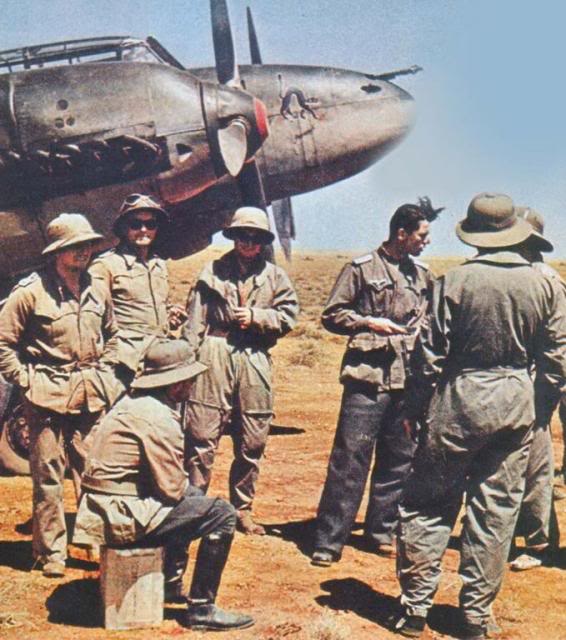 When the German army headed to North Africa and other tropical regions during the Second World War it utilized the sun helmet. The Luftwaffe, Germany’s air arm, followed ground units to the Mediterranean theater where it made up a significant portion of the “Afrika Korps,” and included the Fliegerführer Afrika.
When the German army headed to North Africa and other tropical regions during the Second World War it utilized the sun helmet. The Luftwaffe, Germany’s air arm, followed ground units to the Mediterranean theater where it made up a significant portion of the “Afrika Korps,” and included the Fliegerführer Afrika.
The Luftwafffe personnel, who included air crews, Flak troops and support units were equipped with a variation of the Model 1940 sun helmet.
The first version of the helmet was the French-made version – which was based on the French Model 1931 cork sun helmet. These were a four panel helmet, which was covered in a blue-brown fabric. It has been suggested that there were French Air Force helmets, but there is no evidence to support this claim. On the contrary French Air Force uniforms of the period were brown (like the French Army’s), so it is more likely these helmets were meant to be the same color as the German Luftwaffe uniforms. Period photos suggest that these helmets were issued with and without the tri-color shield and Luftwaffe eagle.
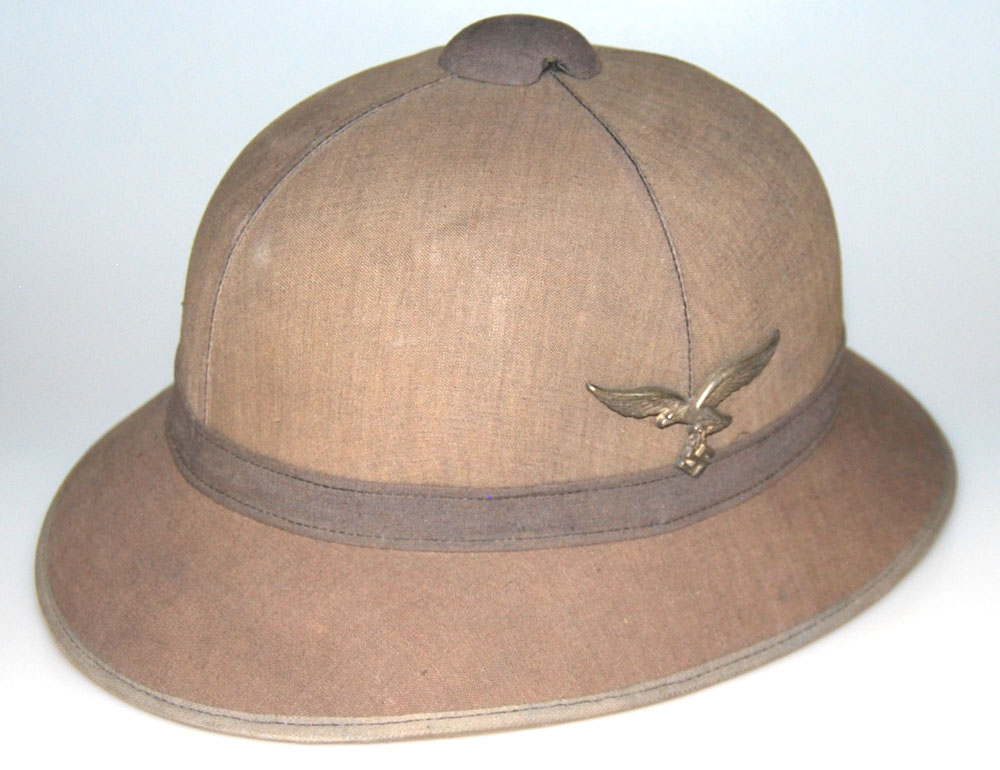
The blue-brown Luftwaffe sun helmet – it was likely produced in France and is based on the French Model 1931 sun helmet (author’s collection)
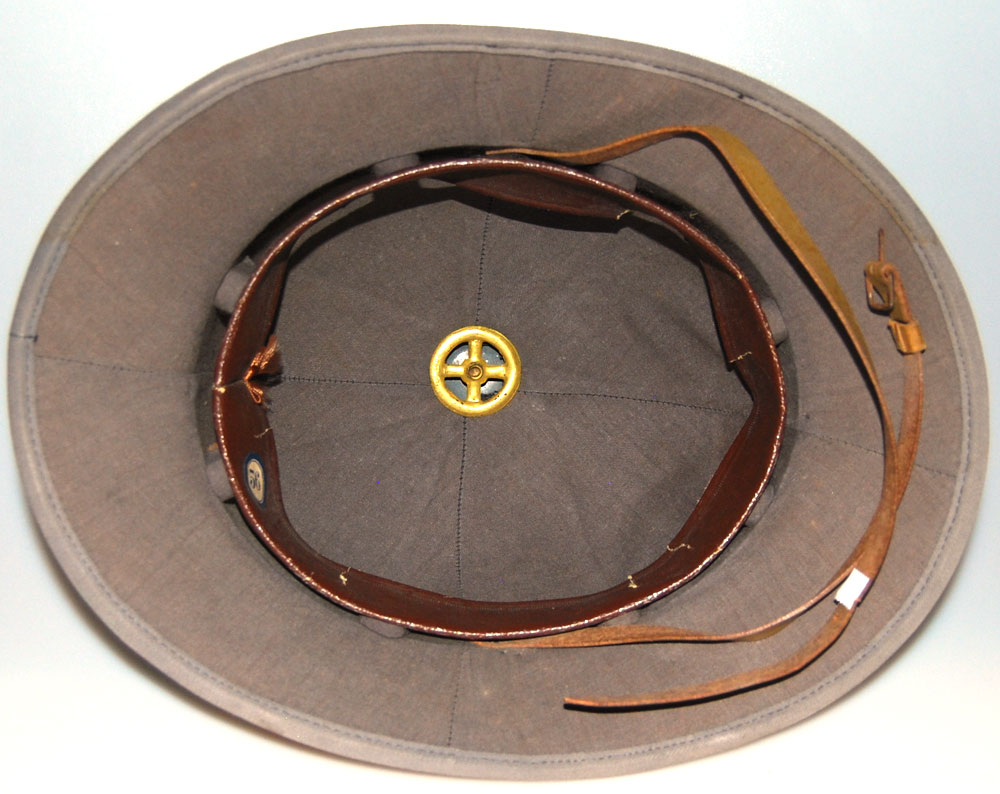
The interior of the helmet shows that the entire helmet was covered in the same blue-brown fabric (author’s collection)
The shield and eagle were made from a zinc alloy and attached to the helmet with prongs that penetrated the cork body.
What is also known is that the blue-brown helmet was not widely issued and should be considered quite rare today. The helmet was replaced by a green canvas/twill version. These helmets were six panels and are of the same pattern as those used by the ground forces. The liner system of this helmet was held to the outside ring of material by six cotter type pins.
The green canvas helmets were also apparently short lived and replaced by the tan/khaki colored version – and is thus far more prevalent than the green canvas type. Both the green and khaki versions used the same insignia as the previous blue-brown helmet.
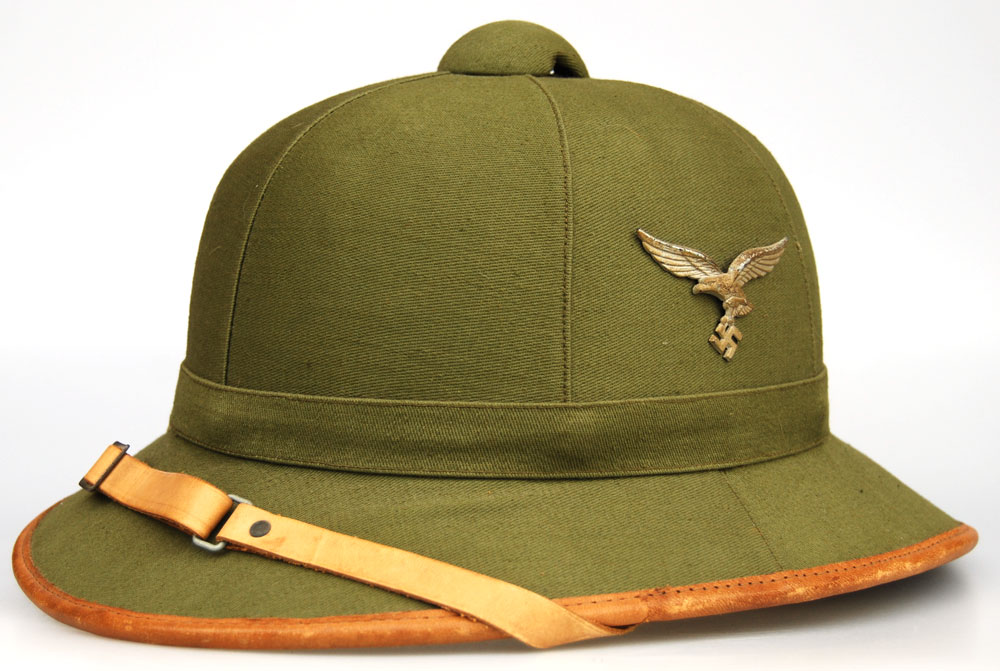
The classic “green canvas/twill” sun helmet – which likely used the same color fabric as the early pattern Afrika Korp uniforms (author’s collection)
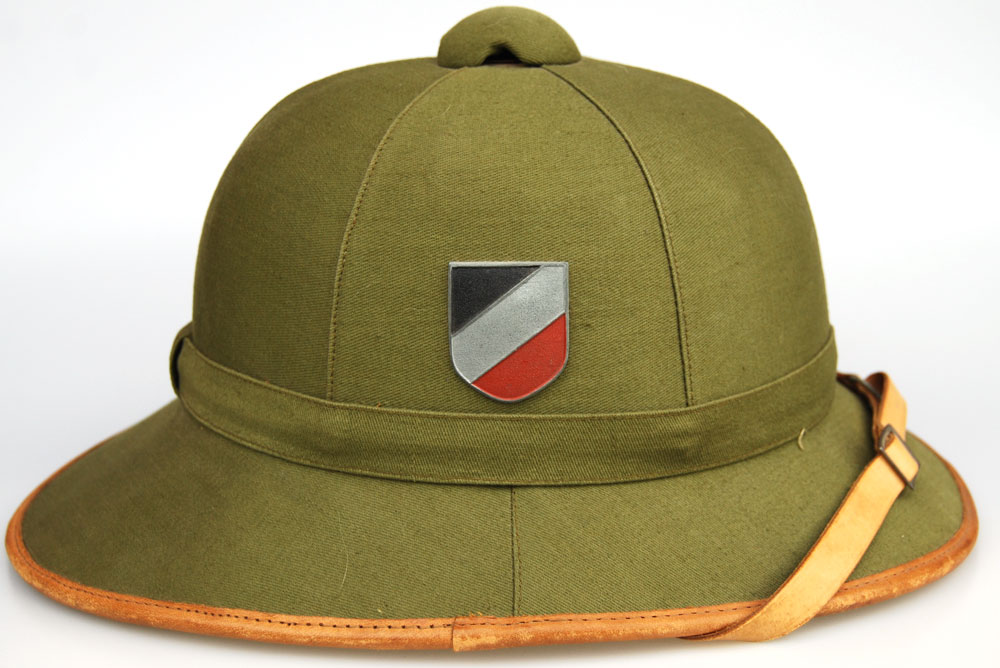
The green canvas helmets are notable for the brown leather trim around the helmet (author’s collection)
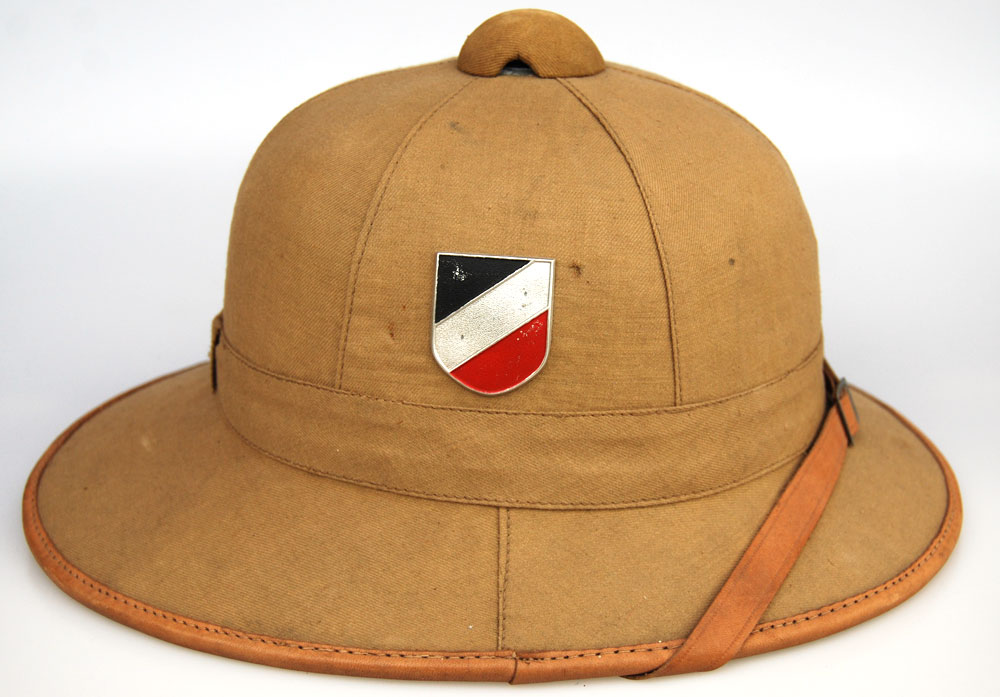
The khaki/tan version featured a lighter brown trim than the green canvas version (author’s collection)
While a felt version of the tropical helmet was produced it was only issued to ground forces and there is no evidence that it was used by the Luftwaffe.

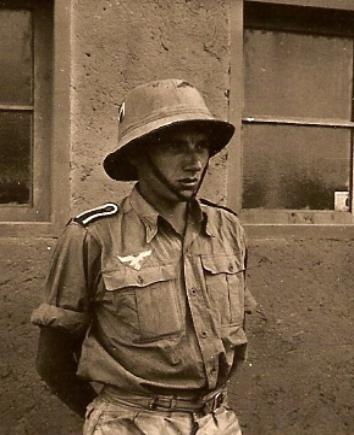
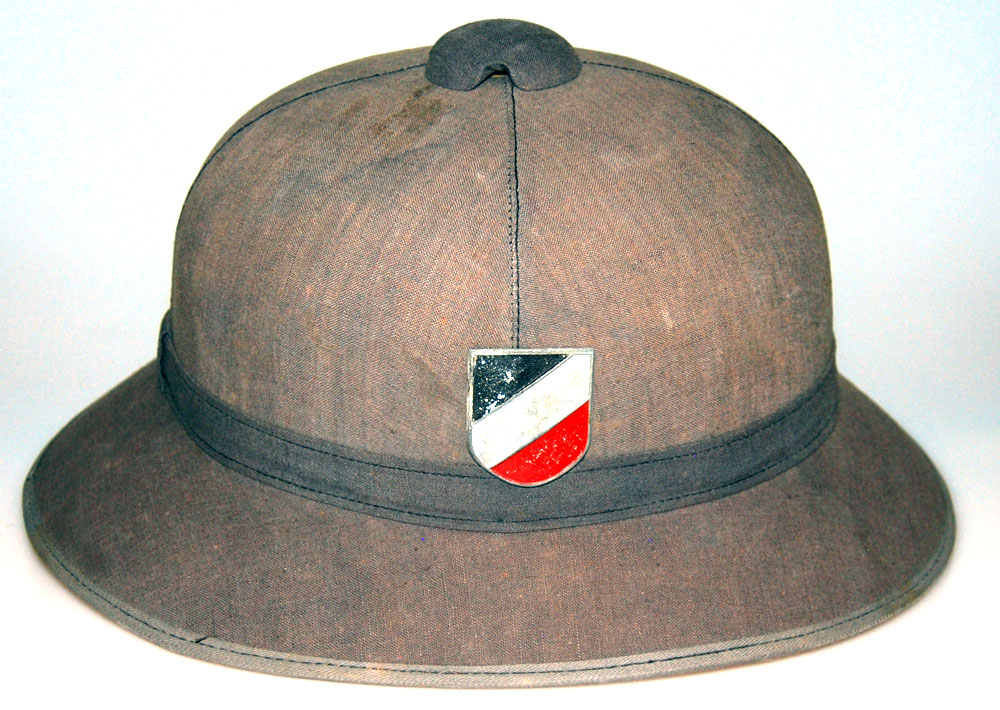
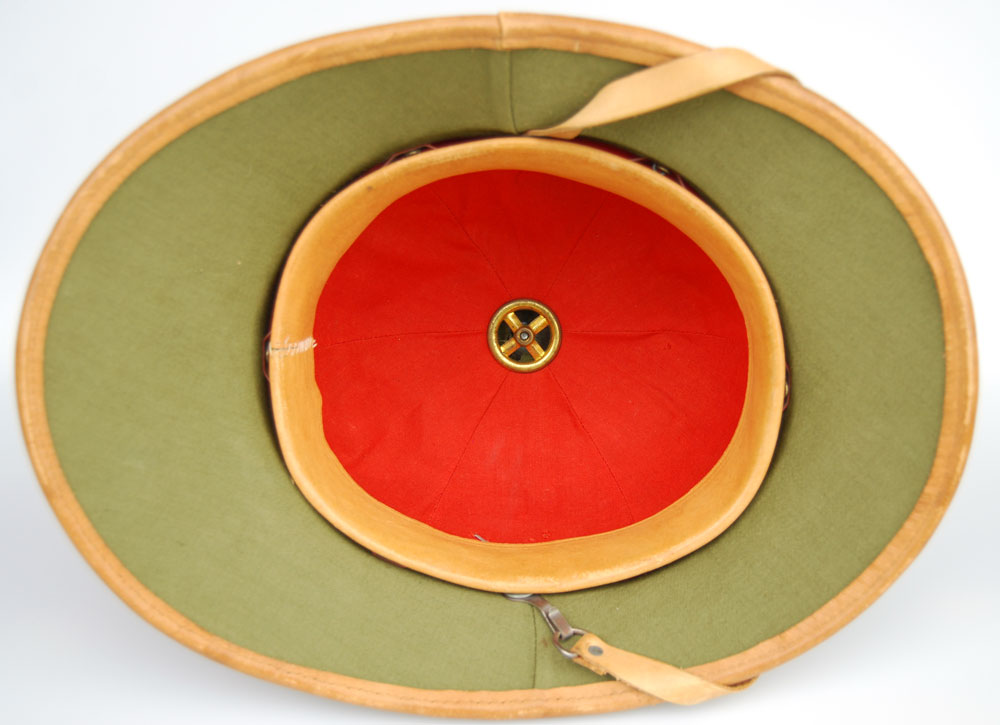
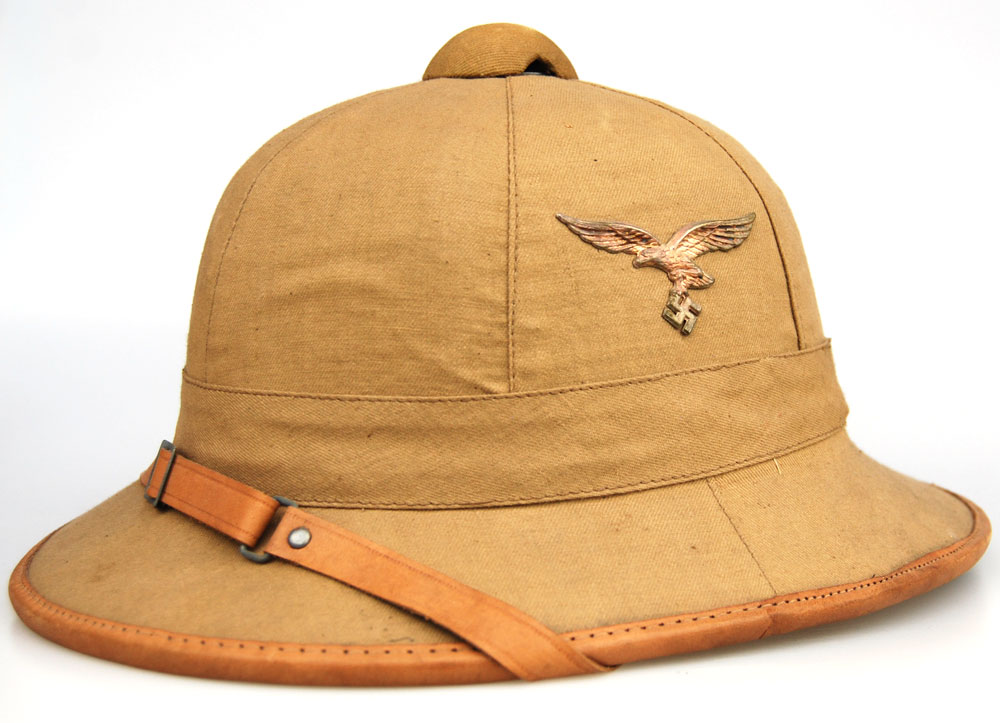
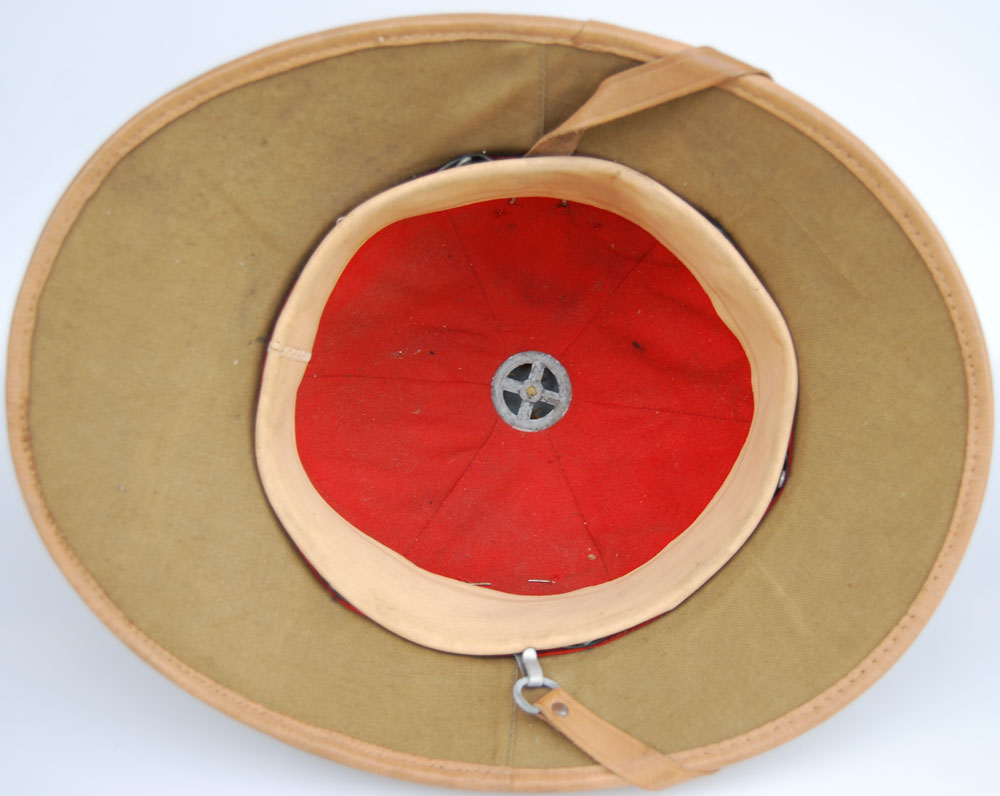
Hi. What about the German made all grey pith? I think they were first issue, before the French. Any info on those? Cheers Tom